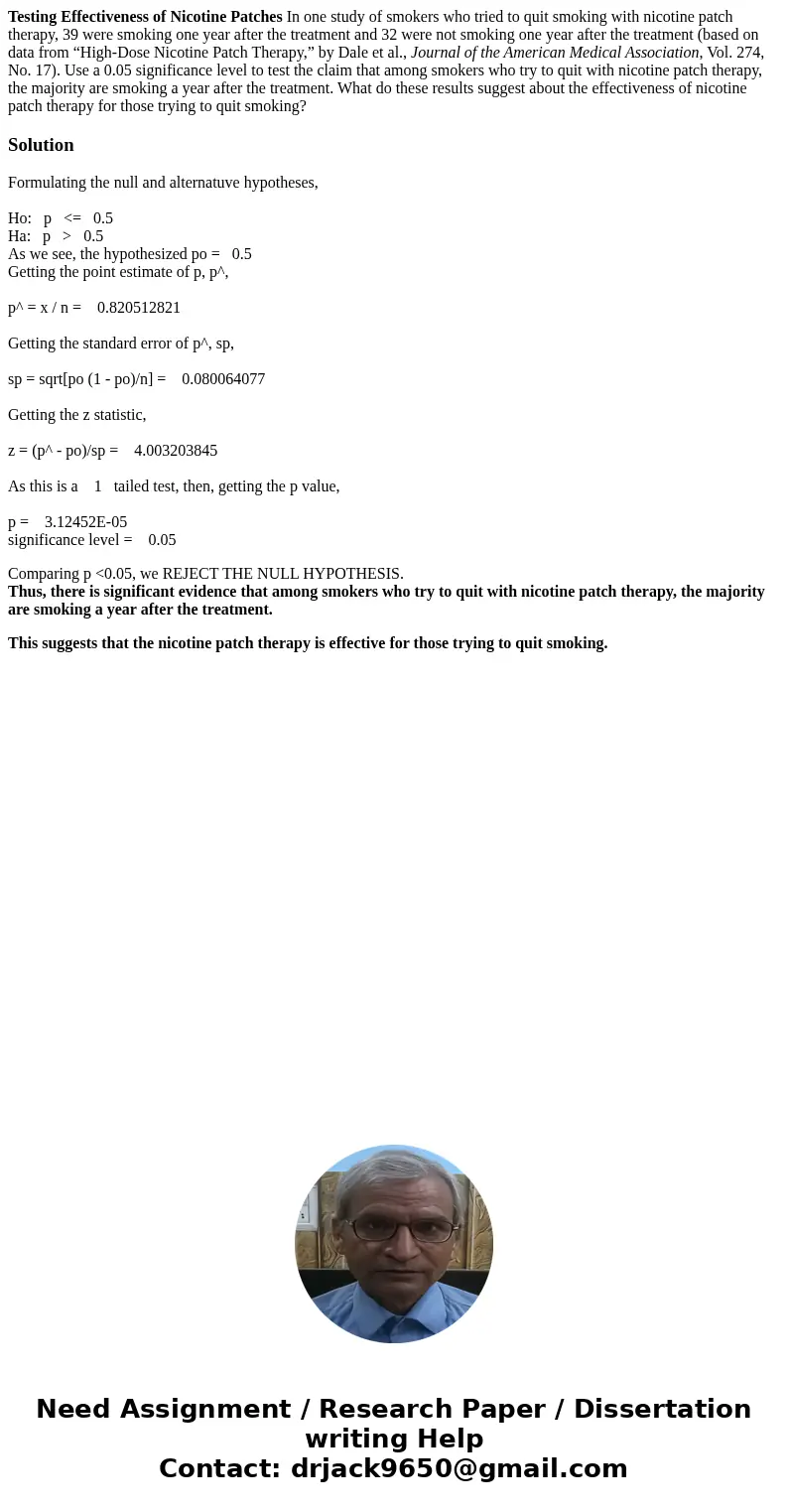Testing Effectiveness of Nicotine Patches In one study of sm
Testing Effectiveness of Nicotine Patches In one study of smokers who tried to quit smoking with nicotine patch therapy, 39 were smoking one year after the treatment and 32 were not smoking one year after the treatment (based on data from “High-Dose Nicotine Patch Therapy,” by Dale et al., Journal of the American Medical Association, Vol. 274, No. 17). Use a 0.05 significance level to test the claim that among smokers who try to quit with nicotine patch therapy, the majority are smoking a year after the treatment. What do these results suggest about the effectiveness of nicotine patch therapy for those trying to quit smoking?
Solution
Formulating the null and alternatuve hypotheses,
Ho: p <= 0.5
Ha: p > 0.5
As we see, the hypothesized po = 0.5
Getting the point estimate of p, p^,
p^ = x / n = 0.820512821
Getting the standard error of p^, sp,
sp = sqrt[po (1 - po)/n] = 0.080064077
Getting the z statistic,
z = (p^ - po)/sp = 4.003203845
As this is a 1 tailed test, then, getting the p value,
p = 3.12452E-05
significance level = 0.05
Comparing p <0.05, we REJECT THE NULL HYPOTHESIS.
Thus, there is significant evidence that among smokers who try to quit with nicotine patch therapy, the majority are smoking a year after the treatment.
This suggests that the nicotine patch therapy is effective for those trying to quit smoking.

 Homework Sourse
Homework Sourse